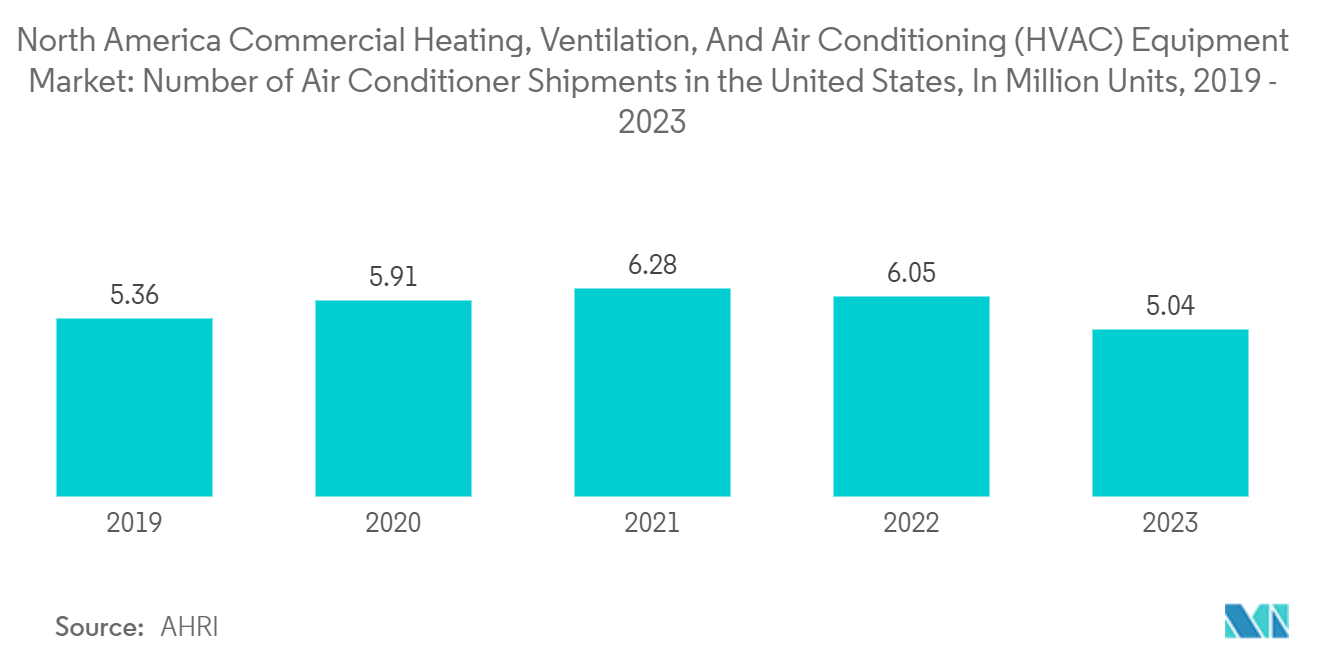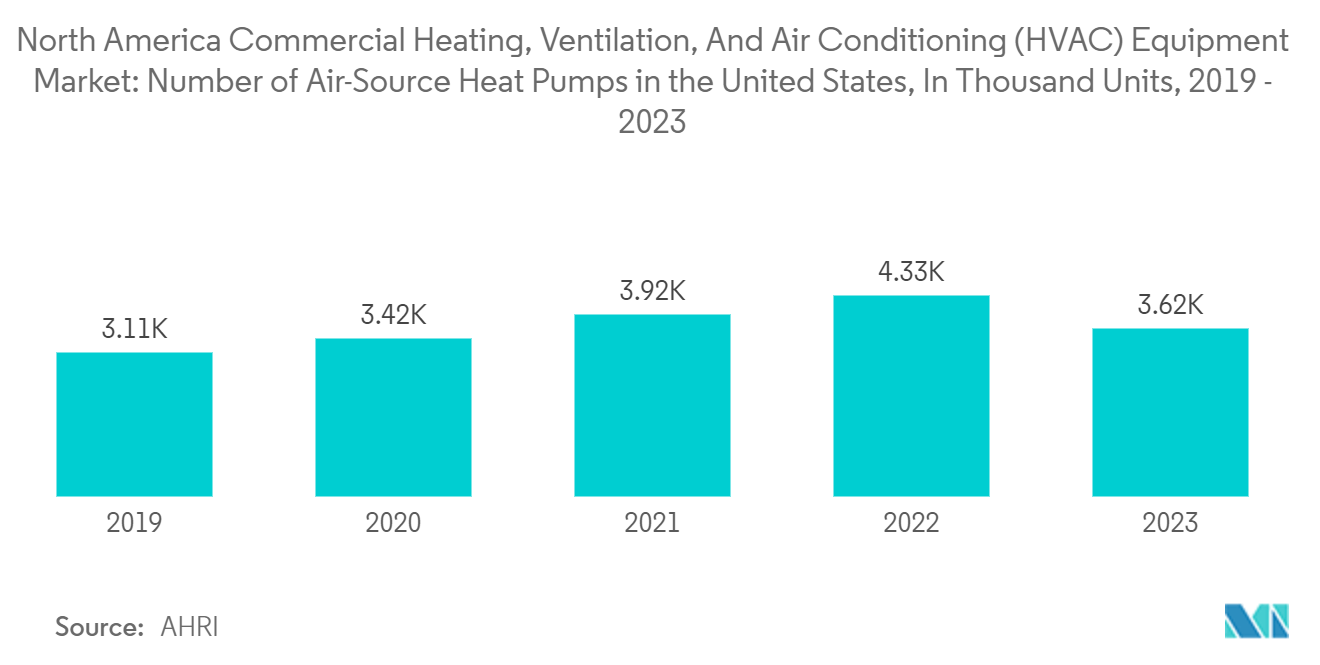Market Trends of North America Commercial Heating, Ventilation, And Air Conditioning (HVAC) Equipment Industry
Air Conditioning Equipment is Expected to Witness Remarkable Growth During Forecast Period
- In North America, central air conditioning systems are prevalent in commercial buildings. Another popular option is ductless mini-split systems. They provide zoned cooling, allowing you to control the temperature in different areas of the house independently. Central air conditioners use refrigerants to absorb heat from indoor air and transfer it outside, creating a cooler indoor environment. In North America, high-efficiency central air conditioning units with variable-speed compressors are increasingly favored for their energy-saving benefits and price temperature control.
- According to AHRI, 5.04 million units of air conditioning equipment were shipped in 2023 in the United States, which is a fall with respect to 2022 levels (6.05 million) but a consistent rise since 2010. Daikin Industries plans to become the top air conditioner system supplier in the US by selling lower-priced air conditioners, announced in 2023. Such growth strategies by key vendors will boost the market growth.
- According to EIA, commercial buildings will grow by 34% based on square footage. Office buildings use more energy for AC compared to other types of buildings. Commercial buildings will account for 25% of the energy consumed for AC in the United States commercial sector in 2050.
- Ductless mini-split systems are gaining popularity due to their flexibility. Ductless mini splits allow for individualized temperature control in different zones or rooms without ductwork, making them ideal for retrofitting existing buildings or adding cooling capacity to specific areas.
- Also, energy standards and regulations, such as those set by the US Department of Energy (DOE) and Energy Star, drive the adoption of energy-efficient air conditioning equipment in commercial buildings. Building owners and operators prioritize equipment with high seasonal energy efficiency ratios (SEER) and energy-saving features to minimize environmental impact and operating costs.

The United States to Hold Significant Market Share
- The United States is expected to grow with a significant annual growth rate due to government regulations, incentives for heat pump adoption, and significant efforts to avoid CO2 and greenhouse gas emissions. For instance, in November 2023, the Biden administration's recent initiative to enhance the adoption of electric heat pumps and decrease the dependency on fossil fuels involved a substantial investment of USD 169 million by the US Department of Energy. This funding will facilitate the expansion of heat pump manufacturing facilities and the production of crucial components like compressors and refrigerants. Such increasing investments by government agencies are expected to drive the heat pump demand.
- Based on the IEA report, North America has the highest capacity for heat pumps installed for heating buildings. In the United States, heat pump sales surpassed gas furnace sales in 2022, following a period of nearly identical growth. These units tend to be larger compared to those commonly used in Asia, where it is more common to have one unit per room. In the United States, sales of air-to-air heat pumps experienced an approximately 11% growth in 2022, surpassing gas furnace sales after years of similar growth patterns.
- Further, new diseases and increasing cancer cases in the United States create demand for HVAC systems in healthcare facilities to maintain clean air inside the patient, operation, and hospital areas. There were 6,120 hospitals in the United States in 2022, with over 33.7 million hospital admissions.
- Key vendors such as Carrier Corporation and Johnson Controls offer products to keep indoor air clean and pure in hospitals. For example, the OptiClean portable negative air machine developed by the Carrier Corporation helps to keep the air clean and remove air contaminated by the virus.
- Also, AC manufacturers are expanding their product range to fulfill the growing consumer demand for data center applications in the United States. This is in response to the growing number of established data centers, such as Meta's 21 data centers, and the ongoing construction of seven more, including one in Mesa, Arizona. Considering the industry's rapid growth, these manufacturers are focusing on developing solutions to utilize the excess heat generated by these data centers efficiently.

North America Commercial Heating, Ventilation, and Air Conditioning (HVAC) Equipment Market Report Snapshots
- North America Commercial Heating, Ventilation, and Air Conditioning (HVAC) Equipment Market Size
- North America Commercial Heating, Ventilation, and Air Conditioning (HVAC) Equipment Market Share
- North America Commercial Heating, Ventilation, and Air Conditioning (HVAC) Equipment Market Trends
- North America Commercial Heating, Ventilation, and Air Conditioning (HVAC) Equipment Companies

